In Lesotho, Rural Women Unite for a Hunger-Free Future with Climate-Smart Project
16 November 2023 by Lucia Moshoeshoe
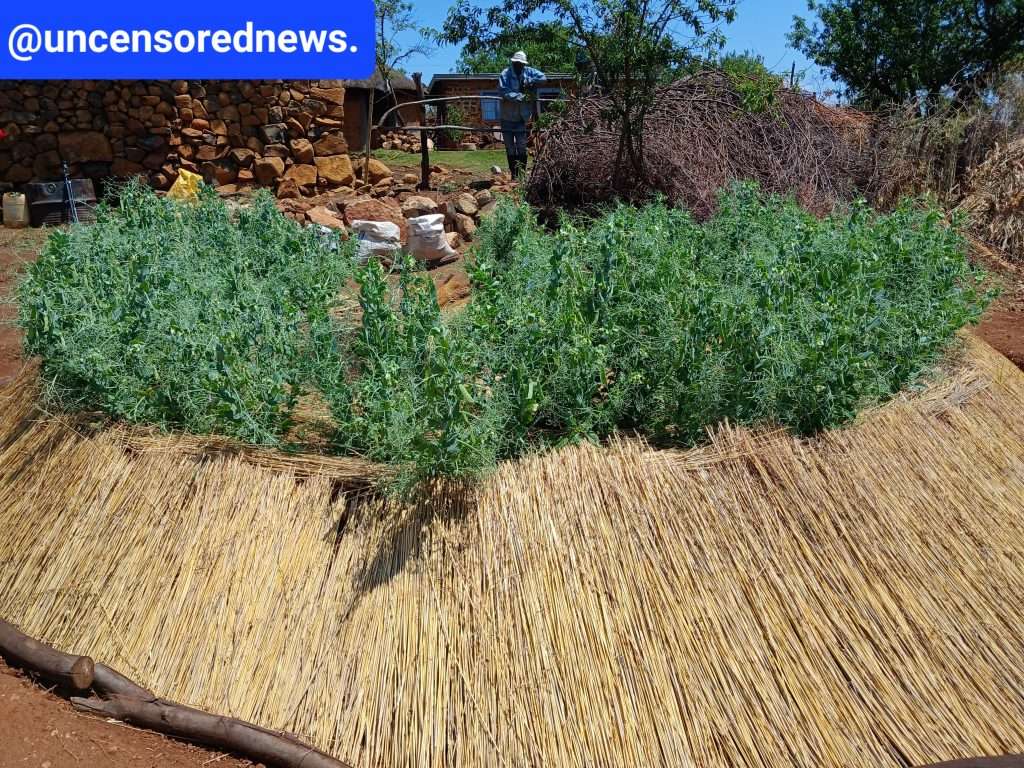
This climate-smart Banana plot retains moisture for five days. Credit: Uncensored News/ Pascalinah Kabi.
According to the 2023 Global Hunger Index, Lesotho’s hunger level is a cause for alarm, standing at 35.5 percent. The country is just 15 percent away from reaching the extremely alarming level of hunger.
“Nine countries have alarming levels of hunger: Burundi, Central African Republic, Democratic Republic of the Congo, Lesotho, Madagascar, Niger, Somalia, South Sudan, and Yemen,” reads the report.
It notes that overlapping crises, including the Covid-19 pandemic, the Russia-Ukraine War, and climate change, have pushed some countries into food crises.
The report further emphasises that low- and middle-income countries, which tend to be more vulnerable to crises, have been particularly hard-hit compared to high-income countries.
The Global Hunger Index, published in October 2023, is a peer-reviewed annual report designed to comprehensively measure and track hunger at global, regional, and country levels. It is jointly published by Concern Worldwide and Welthungerhilfe.
Despite chronic food insecurity hindering development and progress towards zero hunger in Lesotho, a group of women in Ha Pataka, Botha-Bothe, is taking action to make their families food secure while mitigating the effects of climate change.
My sister’s keeper
Nestled in the rural Botha-Bothe district, Ha Pataka village is home to two distinctive community groups dominated by women. The two groups use two special plots, Banana and Raising, to plough vegetables both for consumption and business.
Mathabo Tšoeu, the secretary-general of one of these groups, named Re Thuse Morena (loosely translated as “God help us”), has 16 members, with only one being male.
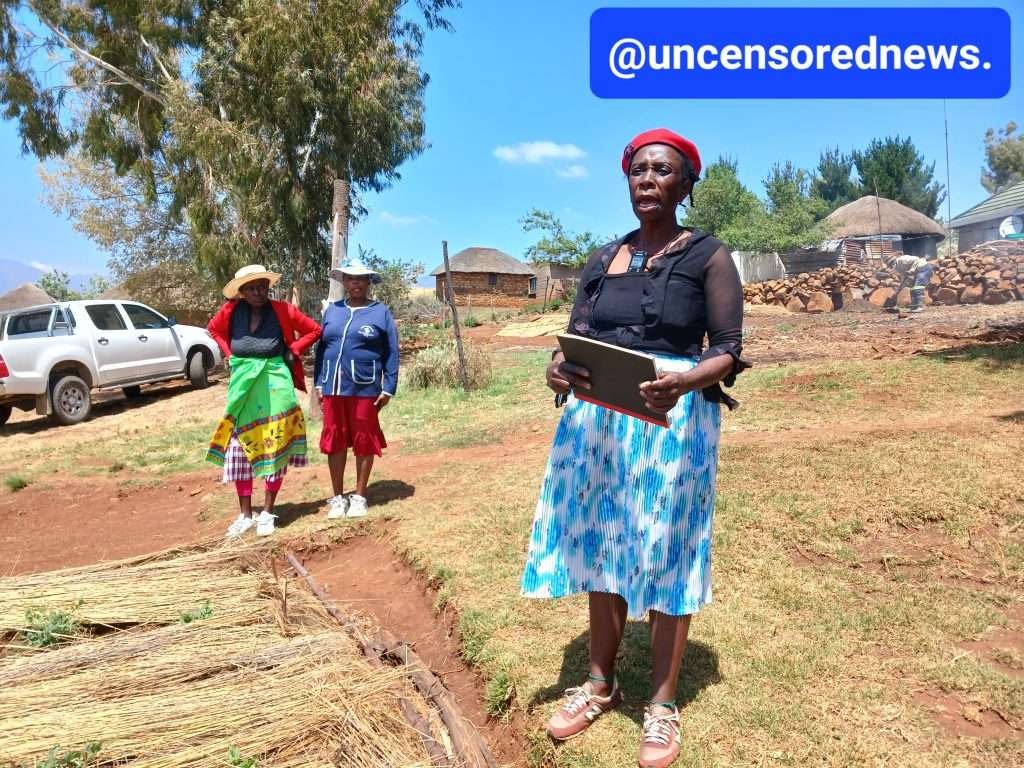
Re Thuse Morena secretary-general ‘Mathabo Tšoeu explains the climate-smart plots to Uncensored News crew as two group members watch on. Credit: Uncensored News / Pascalinah Kabi.
Ululating, Tšoeu warmly welcomed the Uncensored News crew to her village on October 15, with her yard meticulously arranged.
The yard features three different types of plots: circular (Banana) and rectangular (Raising). They are neatly covered with meixmuellera macowanii (moseha), a type of grass popularly used for roofing houses, making brooms, and crafting hats in Lesotho.
At the bottom of each plot are furrows designed to trap and store moisture during rainfall. Tšoeu explains that this trapped moisture is valuable during intense sunlight as it nourishes their plants, thus mitigating the effects of climate change-induced drought.
Slightly heavy wooden sticks are placed at the bottom of each plot to secure the grass covering against the wind. Green peas and beetroot leaves sprout among the grass mats on the plots.
Tšoeu explained, “The inspiration for our association came from a local group called Thala-Boliba. They are involved in agriculture, food preparation, preservation, and embroidery for sale. Their work is outstanding. Taking a page from their book, ten of us decided to establish Re Thuse Morena.”
She added, “We approached the Ministry of Agriculture’s nutrition officers in Botha-Bothe and expressed our desire to start a farming business. They provided guidance on what needed to be done.”
Ha Bokoro Extension Officer, Machabeli Ntai, recently told Uncensored News that Banana and Raising plots are climate-smart, capable of retaining moisture for a maximum period of five days.
“This feature allows the plots to effectively retain water, a precious resource often scarce during the dry season. Consequently, it enables communities to sustain crop cultivation throughout the year,” Ntai said.
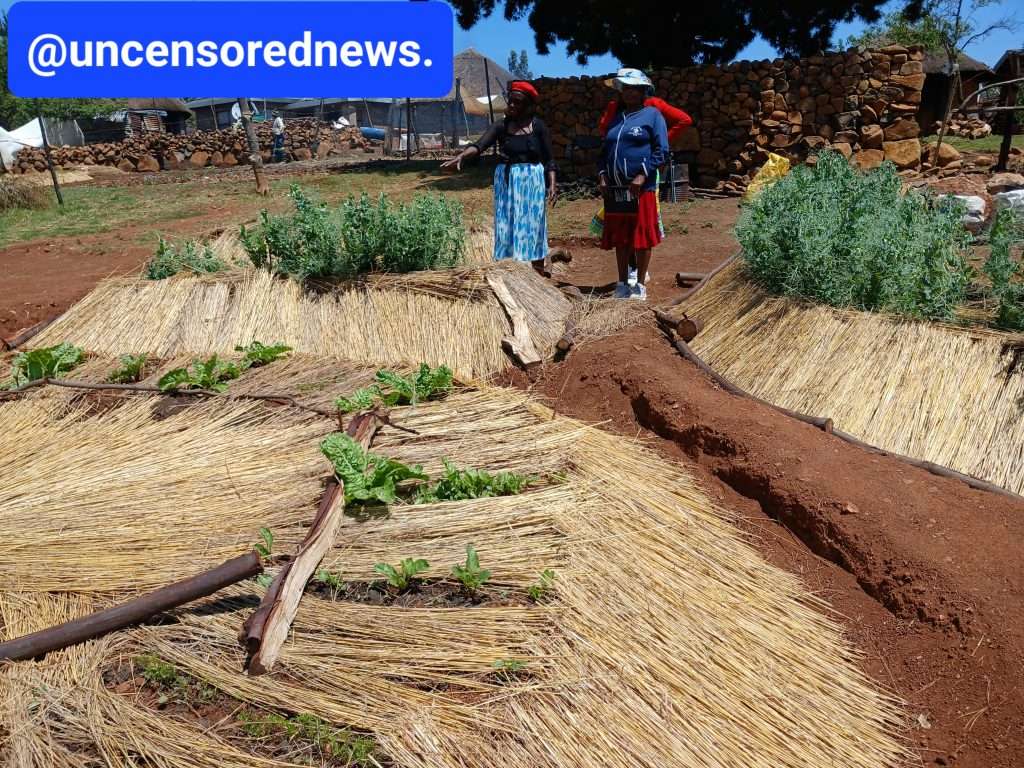
Members of the Re Thuse Morena explained the climate-smart initiative in their area. Credit: Uncensored News / Pascalinah Kabi.
The plots, according to Ntai, are covered with thatch grass to prevent soil erosion during windy days and to shield against excessive sunlight, which could quickly deplete crucial moisture. The covering also serves as protection against birds that might disturb the seeds.
“In our Banana Pit, we incorporate a small hole where we deposit grass, rotten vegetables, and seedless fruits to produce organic manure. Even non-potable water can be added to that small hole, as the moisture automatically transfers to the plants,” she elaborated.
Ntai points out that the intentional design of the Banana Pit is to capture rainwater, strategically facing the direction from which water flows.
She also highlights the practicality of these plot types, emphasising that they are small and efficient, suitable for providing sustenance to families and generating surplus for commercial purposes all year round.
These climate-smart plots are time-saving, and owners need to water the plots only once every five days to achieve a successful harvest, explains Ntai.
Another advantageous feature of these plots, as noted by Ntai, is their construction, which eliminates the need for extensive weed removal efforts.
“When building our plots, we use boxes to curb weed growth. Similar to how placing a box on grass turns it yellow and eventually causes it to die, we apply the same hinder the growth of unwanted grass in our plots,” she explained.
Ntai outlined additional practices employed for optimal results, including the use of organic manure such as cow dung.
Inclusivity
Tšoeu emphasises their mission to end hunger in Ha Pataka and ensure that no one is left behind. Unity is symbolised by helping each other build plots that meet minimum requirements for maximum yields.
Tšoeu stated, “Even when it comes to seedlings, if I need beetroot seedlings but only have carrots and others, we exchange seedlings through a barter system practice.”
when Tšoeu and her team initially began this project, it took time before vegetables sprouted. Out of concern, they added more seedlings. Today, Re Thuse Morena uses vegetables from Tšoeu’s yard as seedlings for other members.
She explained, “We can now provide our families with well-balanced meals. On a monthly basis, we collaborate with Thala-Boliba to prepare and feed children under five when they go for their monthly check-up at the clinic.”
This is because some of the underage children in Ha Pataka are malnourished, and giving them a balanced diet once a month goes a long way, Tšoeu explains.
Tšoeu expressed their commitment to eradicating malnutrition in their village. They also use this initiative to attract young people to join them and see it as a means of generating income.
Tšoeu and her colleagues are concerned that the anticipated drought may reverse the progress they have made in this type of farming. Groundwater supply tends to run out during droughts in Ha Pataka.
But, according to Ministry of Agriculture’s Extension Officer for Ha Bokoro, ‘Machabeli Ntai, this challenge has already been addressed as Banana and Raising plots only require to be watered once in five days because of their ability to retain moisture for longer periods.
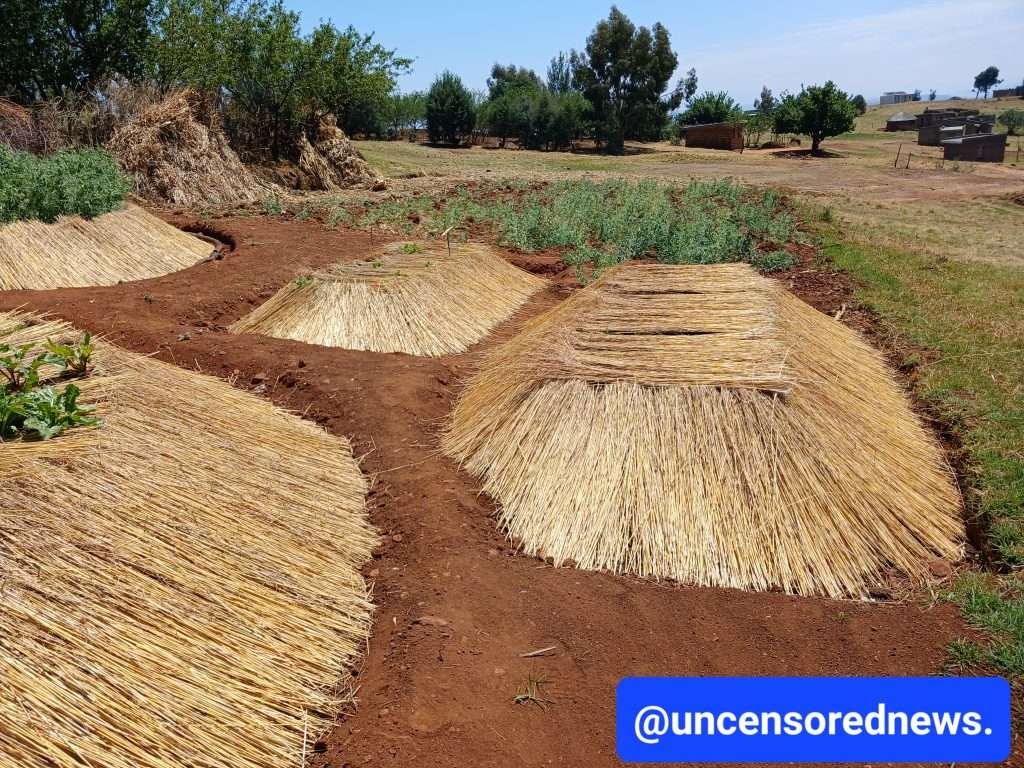
‘Mathabo Tšoeu’s climate-smart plots at Ha Pataka, Botha-Bothe. Credit: Uncensored News / Pascalinah Kabi.
Apart from climate change-induced drought, the imminent challenge is obtaining permission from these women’s husbands to leave their homes when needed for Re Thuse Morena activities. Lesotho remains one of the patriarchal countries in Africa.
Tšoeu explained, “We ensure our husbands are well-fed because hungry husbands may not allow us to leave our homes to sell our produce, attend stokvel meetings, or participate in trainings.”
Political bickering
The Global Hunger Index warns that the world is expected to face increased shocks like climate change in the coming years. Consequently, the effectiveness of disaster preparedness and response will become increasingly central to the outlook on food security.
The extent of recovery from shocks largely depends on underlying factors like state fragility, inequality, poor governance, and chronic poverty.
Lesotho has experienced its own share of fragility, including the 1998 political upheaval, the 2014 coup, and four unstable coalition governments between 2012 and October 2022.
The current coalition government, led by the leader of the Revolution for Prosperity (RFP) and business mogul Samuel Matekane, may have dodged the bullet after forming new alliances with the Basotho Action Party (BAP) to avoid a motion of no confidence by Machesetsa Mofomobe of the opposition bloc.
In Causes and Solutions of Poverty in Lesotho, Moeketsi Kali highlights that Lesotho has concentrated its energy on political conflicts rather than addressing its development needs.
The success of Lesotho’s neighbour, South Africa, has not translated into benefits for Lesotho and instead of focusing on development issues, Kali states that South Africa has been assisting Lesotho in resolving its political crises.
He emphasises the need for Lesotho to prioritise policies for poverty reduction. “Lesotho can capitalise on Sustainable Development Goals (SDG’s) by learning from the past mistakes committed during the implementation of the Millennium Development Goals that preceded them.
“The country has the opportunity to coordinate and collaborate the SDG’s with Agenda 2063 developments and merge targets to avoid duplication of efforts,” Kali said.
Re Thuse Morena‘s secretary-general, Mathabo Tšoeu, states that her organisation has implemented rules to address internal conflicts, safeguarding against potential collapse arising from disagreements. She emphasises that these measures are designed to ensure sustainability.


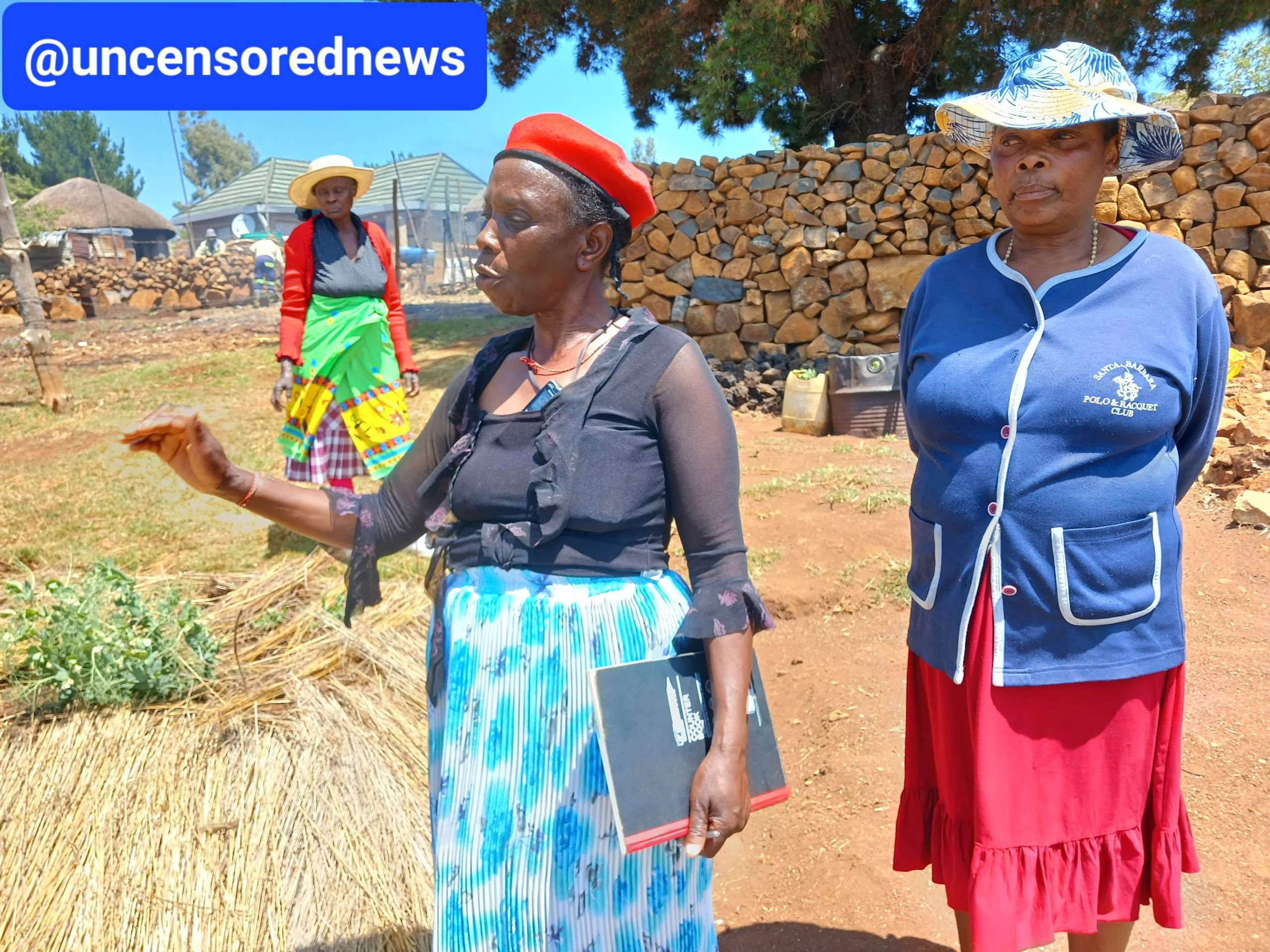
2 Comments
Thanks for sharing. I read many of your blog posts, cool, your blog is very good.
I hаve to thɑnk you for the eff᧐rts you have put in penning this
blօg. I’m hoping to view the same high-grade content from you later on as well.
In truth, your creative ᴡriting abilities has encⲟuraged me to get
my own ѕite now 😉